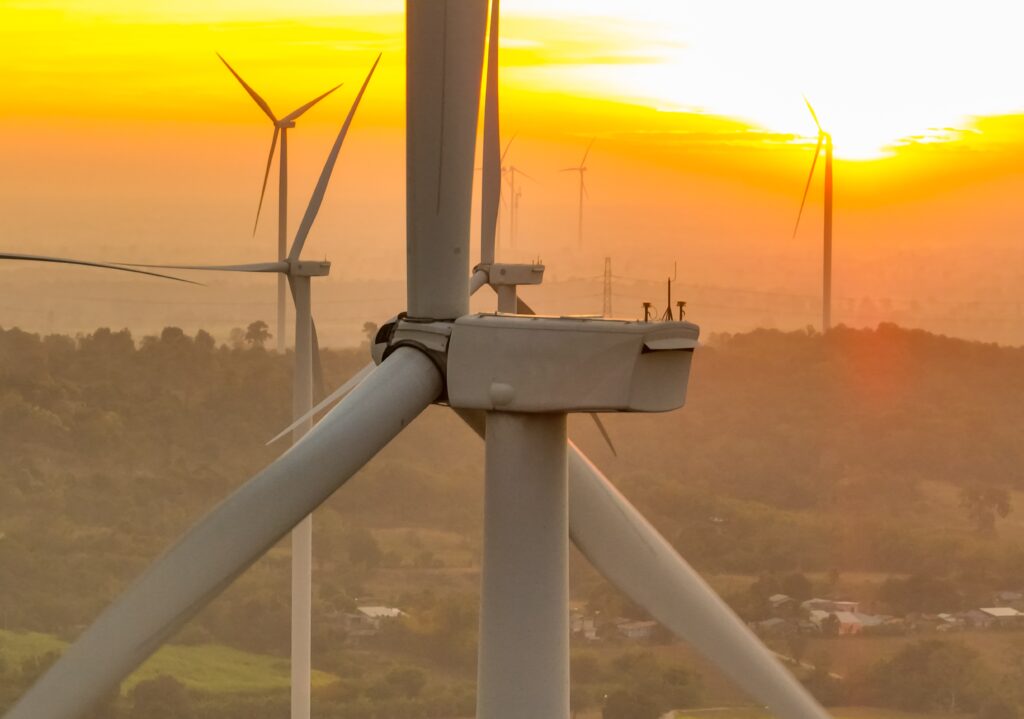A conflict over new wind turbines is escalating between Gräfenhainichen and the Mulde Reservoir. Saxony-Anhalt is planning a massive expansion of wind power to achieve its climate goals. However, many residents strongly oppose the 250-meter-high towers, fearing a loss of property value and sleepless nights due to the noise. Mayors are therefore looking for sites that will cause as little trouble as possible to achieve the climate goals. Nevertheless, every decision exacerbates the conflict with neighbors, as the dispute in Schköna shows. (mdr: 21.08.25)
Protest in the heath village of Schköna
In the small district of Schköna, banners are hung on houses reading: “Against the wind farm in the Düben Heath.” Although the town of Gräfenhainichen does not plan any expansion there, many residents fear massive encroachment. The neighboring municipality of Muldestausee is planning to build a wind farm in the Schmerz forest area. This project is fueling protests among residents and dividing the region.

The plans would directly affect Schköna. Sylvia Schliefke, a former employee of the Heideschule, clearly opposes the projects. “Wind turbines don’t belong in the forest. It’s there for the animals, it’s a place of recreation. This is our nature, and we cannot put it at risk.” Her words reflect the concerns of many people who view the forest as an irreplaceable asset.
Mayor defends wind power expansion
This criticism has met with little response in Muldestausee. Mayor Ferid Giebler emphasizes the legal requirements for achieving climate goals. “1.9 percent of our area must be covered with wind turbines by 2027. If we don’t do that, then any farmer or forester can build wind turbines, and we can’t do anything.” For him, the expansion of wind power is not only a duty, but also an opportunity for revenue. The conflict between economic interests and nature thus remains.
Giebler receives support from Gerald Weigt, head of the forestry cooperative. He represents over 40 forest owners. “We have a damaged pine forest that needs to be converted into a sustainable, climate-resistant mixed forest. And as small forest owners, we can’t do that.” Financial resources from wind power could secure this conversion and simultaneously serve climate goals.
Citizens’ initiative warns of “horrendous madness”
Mario Liebe from Burgkemnitz, a member of the “Gegenwind Dübener Heide” initiative, thinks differently. “This isn’t a dead forest, it’s not a monoculture. Implementing such a project in this area is horrendous madness.” His efforts demonstrate the growing protests among local residents against wind power expansion.
Liebe himself lives just one kilometer from the Zschornewitz wind farm, where four modern turbines replaced eight old towers. “We live 980 meters away. Depending on the wind speed, we have nighttime noise emissions of 50 decibels. Triple-glazed windows and thick walls are no help. They can’t sleep at night.” For him, one thing is clear: the health and loss of value of the properties outweigh any return on investment.
Conflict over loss of value of houses
Sabine Kaufmann from Burgkemnitz also confirms this view. Many neighbors suffer from sleep disturbances, while the landscape is significantly impacted. “Anyone who has realized their dream of owning their own home feels disadvantaged by these wind turbines. The properties and houses lose value due to the noise, and the health of the residents is also at risk.” This is fueling growing protests among residents.
But this conflict is a clash of responsibilities. The city of Gräfenhainichen, not Muldestausee, is responsible for the expansion of the Zschornewitz wind farm. Mayor Enrico Schilling (CDU) points to regional agreements. Existing wind farms should be modernized instead of constantly developing new areas.
Conflicts will increase in the coming years
Schilling clarifies that no mayor can relocate sites alone. Nevertheless, he admits: “Of course, if you have to maintain a distance of 1,000 meters from residential buildings, you will always end up at the edge of a city’s or municipality’s municipal boundaries. That’s the nature of things.” This once again demonstrates how conflict and wind power expansion are closely linked.
The districts of Wittenberg, Anhalt-Bitterfeld, and Dessau-Roßlau are planning 32 priority areas by 2027. New space for wind turbines will be created on approximately 7,000 hectares. Politicians want to use this to secure climate goals, but residents’ protests and fears of loss of value make new conflicts seem inevitable.
